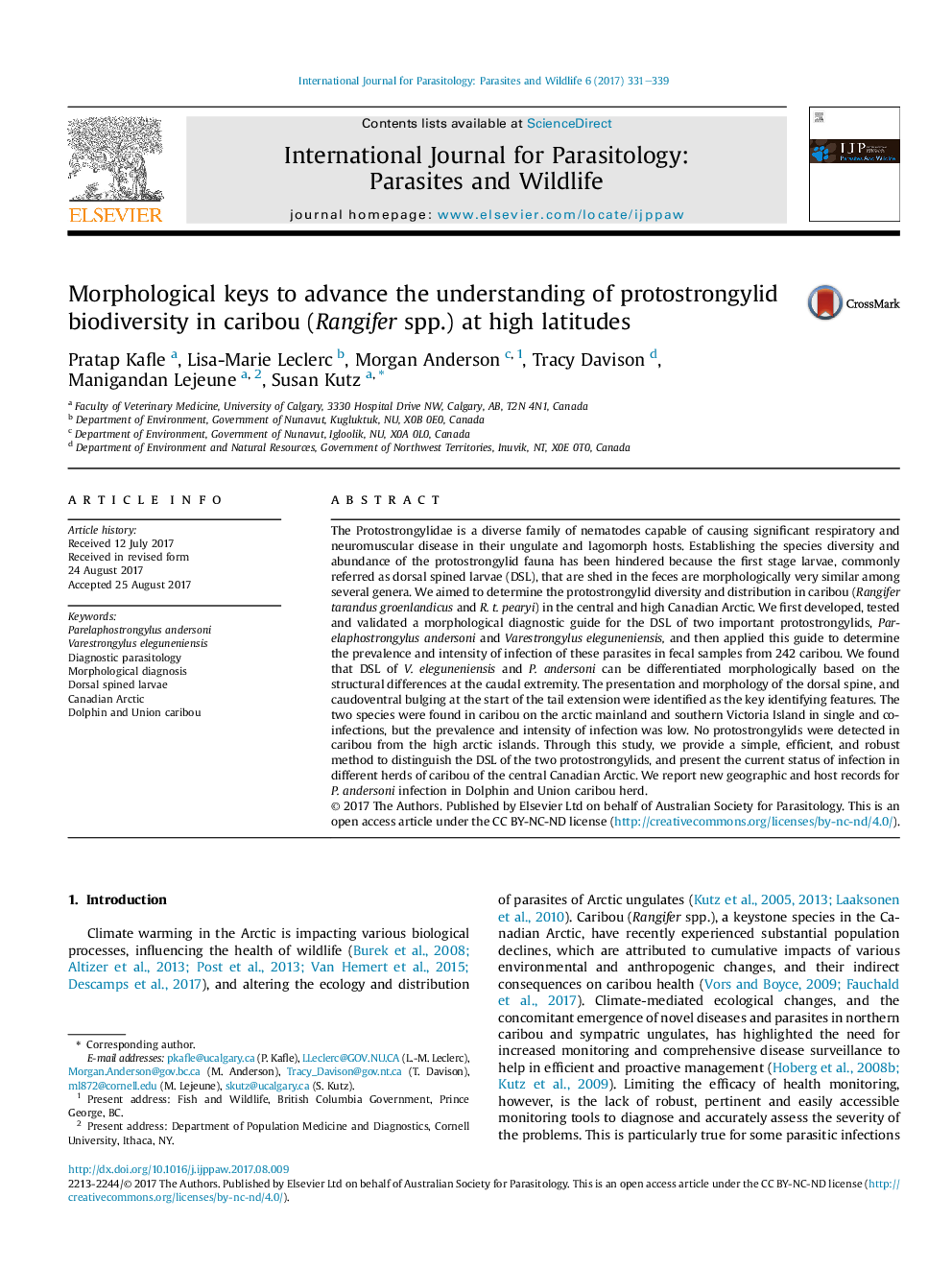| Article ID | Journal | Published Year | Pages | File Type |
|---|---|---|---|---|
| 5517912 | International Journal for Parasitology: Parasites and Wildlife | 2017 | 9 Pages |
â¢We provide a morphological guide for first stage larvae of two protostrongylids in caribou.â¢Key differentiating features are found at the caudal end of the larvae.â¢Using the guide, 242 caribou fecal samples were analyzed to determine parasite diversity in the Arctic.â¢We report Parelaphostrongylus andersoni in Dolphin-Union caribou for the first time.â¢We show the value of morphological approaches in parasitological investigation.
The Protostrongylidae is a diverse family of nematodes capable of causing significant respiratory and neuromuscular disease in their ungulate and lagomorph hosts. Establishing the species diversity and abundance of the protostrongylid fauna has been hindered because the first stage larvae, commonly referred as dorsal spined larvae (DSL), that are shed in the feces are morphologically very similar among several genera. We aimed to determine the protostrongylid diversity and distribution in caribou (Rangifer tarandus groenlandicus and R. t. pearyi) in the central and high Canadian Arctic. We first developed, tested and validated a morphological diagnostic guide for the DSL of two important protostrongylids, Parelaphostrongylus andersoni and Varestrongylus eleguneniensis, and then applied this guide to determine the prevalence and intensity of infection of these parasites in fecal samples from 242 caribou. We found that DSL of V. eleguneniensis and P. andersoni can be differentiated morphologically based on the structural differences at the caudal extremity. The presentation and morphology of the dorsal spine, and caudoventral bulging at the start of the tail extension were identified as the key identifying features. The two species were found in caribou on the arctic mainland and southern Victoria Island in single and co-infections, but the prevalence and intensity of infection was low. No protostrongylids were detected in caribou from the high arctic islands. Through this study, we provide a simple, efficient, and robust method to distinguish the DSL of the two protostrongylids, and present the current status of infection in different herds of caribou of the central Canadian Arctic. We report new geographic and host records for P. andersoni infection in Dolphin and Union caribou herd.
Graphical abstractDownload high-res image (347KB)Download full-size image
